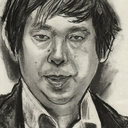[Pulmonary eosinophilic granuloma--clinical analysis of 17 patients].
Słowa kluczowe
Abstrakcyjny
We studied the clinical features of 17 Japanese patients with pulmonary eosinophilic granuloma. Fourteen of the patients were men and three were women; they ranged in age from 19 to 64 years, with a mean of 34 years at the time of the first examination. Pathologic diagnosis in all patients was based on histologic findings of specimens obtained by open lung biopsy. Major symptoms were dry or productive cough, chest pain, dyspnea, and fever; 23.3% of the patients were asymptomatic. Five patients had pneumothorax. Most patients did not have abnormal physical signs. All 17 patients had histories of smoking, and 14 had started to smoke cigaretts before the age of 20 years. Ten patients (58.8%) first presented with cough or dyspnea, and in the other patients (41.2%) the first abnormalities detected were pulmonary infiltrates on chest radiographs during health examinations. Chest roentgenograms usually showed bilateral abnormalities. These abnormalities were distributed over all lung fields in 9 cases (52.9%), in the upper and middle lung fields in 4 cases (23.5%) in the upper lung fields in 3 cases (17.7%), and in the middle lung fields in 1 case (5.9%). Micronodular, reticular, cystic or linear shadows were evident in most cases, and were mixed in various proportions. Eleven patients (65%) had abnormalities of pulmonary function. Low %VC and %FEV1 and high RV/TLC ratios were observed in 20-40% of the patients. Low DLCOs (%DLCO < 70%) were observed in 53% of the patients. Arterial blood gases were normal in 11 of 15 patients. The extent of shadows in the chest roentgenogram was related to the frequency of dyspnea, to the total number of cells in bronchoalveolar lavage fluid, and to the abnormally low %FVC and %FEV1, but not to the %DLCO. Data from bronchoalveolor lavage fluid were non-specific in this disease, but further studies will be needed. Follow-up data were collected on 16 patients. The mean time from the histologic diagnosis after open lung biopsy to the last observation was 81.8 +/- 45.1 months (range, 2 months to 15 years). One patient died of pulmonary eosinophilic granuloma. The usefulness of steroid therapy remains uncertain.


